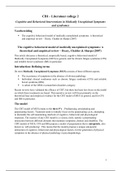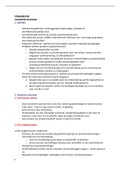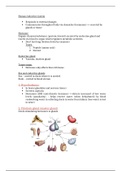Samenvatting
Summary CBI - Literature lecture 2: Cognitive and Behavioral Interventions in Medically Unexplained Symptoms and syndromes
- Instelling
- Universiteit Leiden (UL)
This document entails a detailed summary of the literature for the second lecture of the CBI course. It discusses the topics of Medically Unexplained Symptoms and syndromes. The literature discussed is the following article: • The cognitive behavioral model of medically unexplained symptoms:...
[Meer zien]









